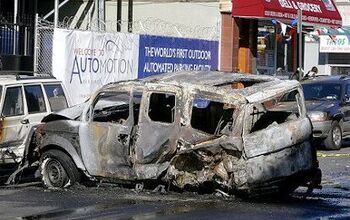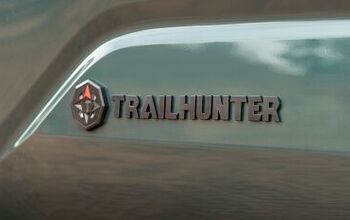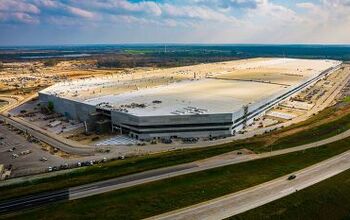Ask the Best and Brightest: Why Do Ferraris Break Into Two?
Obviously, I don’t have an statistical data on Ferrari crashes. Neither, I suspect, does the National Highway Traffic Safety Administration (NHTSA); they don’t tend to compile stats on marques that sell in the hundreds. But as someone who spends his days floating through the autoblogosphere, I’ve noticed a number of halved Ferraris. We have the famous Enzo crash on the PCH, and now this, a fatal accident involving the mixed martial artist/TapOut clothing designer artist known as “The Mask.” So I clicked on over to wreckedexotics.com to search for more anecdotal evidence. While there are a number of Ferraris with fire-vaporized back ends (that’s where the engine is), I didn’t find a trove of demi-Ferraris. To defend my access to all those Ferrari press junkets (as if), I’ll posit that ANY car would break in two if it happened to hit something immovable side-on at a high rate of speed. In fact, it could very well be a good thing, providing you’re ahead of the fissure, as the cleaving process dissipates lethal energy. The question is, is that true?
More by Robert Farago


































Comments
Join the conversation
Its obvious! A better example mechanical breakup due to circumstances similar to those of quasiperiodic orbits near Jovian resonances. See!? The acceleration in one part of the Ferrari overcomes the mass integrity factor of the time delayed material mass change delta in the latter half of the car. Even Einstein is laughing at such ammusing delimas of feeble construction expected to overcome physics. Seriously?! Oh, what comedy!
What's the dark stain on the pole? I hope that's not what I think it is... AllStingNoBling : March 12th, 2009 at 12:52 pm Assuming that Ferrari uses a a semi-monoqoque design with a carbon-fiber passenger compartment bolted to the section with the engine, that makes much sense. More than likely, the body is designed to split. In the defense industry, we call that frangibility. By having a design like that, you a) keep the weight down, b) have a lightweight design, which dissipates energy upon impact. Think about gravel traps on race courses. When your vehicle hits the gravel (though the B&B are too skilled to find themselves in that situation), it transfers its energy into the gravel, displacing it. It’s the same idea in a frangible design, allow the vehicle to break apart, thereby reducing the energy experienced by the little cherries in the can. Of course, if you look at the picture, you will clearly see the poll that the d-bag hit. That’s a hell of a way to prove that composites are brittle. In this case, I think you're right, and the car ended up splitting where the semi joins the monocoque. In case of the Italian and Malibu Enzo crashes, the car looks like it split into two because the front and rear CF sections are joined. The rear section carries the engine/suspension subframe sheared on impact from the passenger section. This makes sense to me since the drivetrain is heavy and carries the subframe and the section it's attached to, somewhere else in case of a crash.
One less rich idiot to mess up traffic